Texas Style Smoked Beef Brisket
On June 11, 2019 (Updated September 06, 2022)
This post may contain affiliate links. Please read our disclosure policy.
Texas Style Smoked Beef Brisket is more than a simple recipe, it’s a process for melt in your mouth smoked brisket. All you need is salt, pepper, smoke, and time, and you’re on your way to eating the best beef brisket of your life.
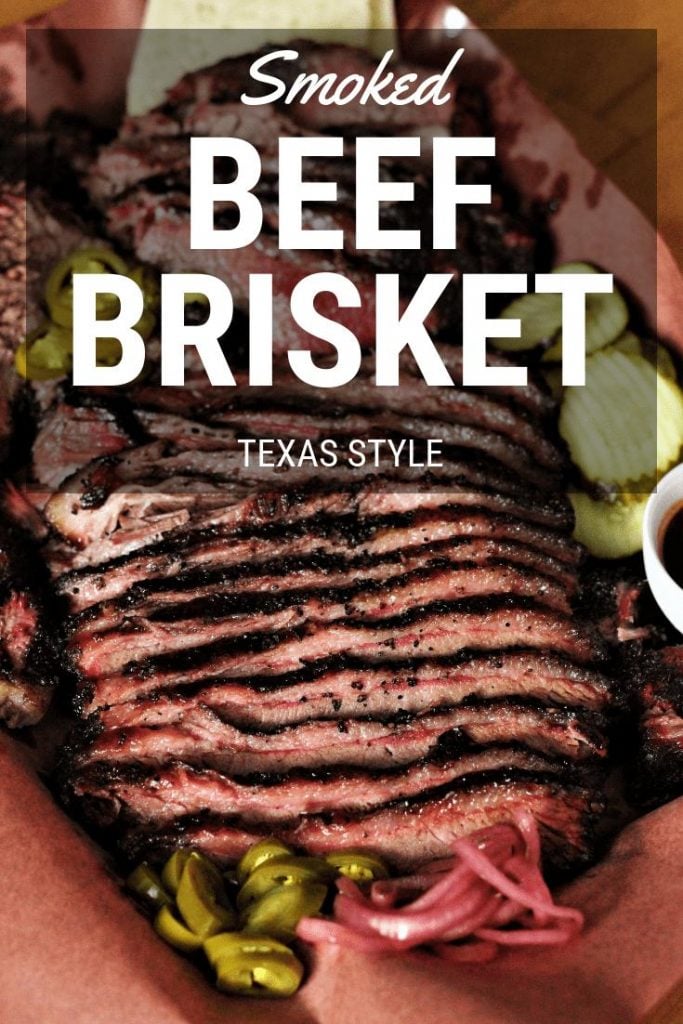
Smoked Brisket
I totally understand how intimidating it can be to smoke a huge, expensive brisket for the first time. That’s why I’ve tested and re-tested many different methods and recipes to help you achieve perfect results every time using a relatively simple process.
Once you try this juicy brisket, you’ll be itching for the next opportunity to smoke another one. BBQ (especially brisket) is something you have to learn by experiencing it yourself, so let’s jump in and give it our best go!
Tools Needed to Smoke Brisket
I have linked the products that I use when smoking my brisket below so you can see exactly what I’m using at home. Not all of these are necessary, but after smoking a bunch of briskets, I have found they make the job a lot easier!
- Smoker. I like to use my CampChef SmokePro, but any variety that can hold a steady temperature of 225 degrees F will work great.
- Large Cutting Board. You’ll need a big surface to slice your hunk of brisket on once it’s ready to serve.
- Meat Thermometer. The Thermapen Mk4 is the perfect thermometer for this brisket, but any reliable thermometer will do.
- Butcher Paper. This Texas style brisket is wrapped in butcher paper during the stall. You can pick up some Hey Grill Hey Peach Butcher Paper over at Patio Provisions today!
- Chef’s Knife. A good, sharp knife is necessary to slice your brisket. This Dahstrong Chef Knife is perfect for the job.
How to Smoke a Brisket
Smoking brisket isn’t hard, it just takes time, and lots of it! Follow the steps below to get the best smoked brisket of your life:
- Select your brisket. I have a full write up about choosing the perfect brisket in my Brisket 101 post. Here are the basics: Plan on purchasing a whole packer brisket with both the point and flat muscle included. The grade of your meat matters, prime beef will have more fat marbling. (This means more flavor and juiciness than a choice graded brisket!). Buy about 1/2 pound (or more) of brisket per person you are serving.
- Trim the brisket. Some Texans claim they don’t trim at all. At most of the top smokehouses, however, they do trim. This step is so important for how the final product will turn out. Spend the 20-30 minutes you need to trim it properly. I have step by step instructions (and pictures) for trimming your brisket in this post: How To Trim a Brisket. There is also a sped-up version in the video (below the recipe card) that will help you get a visual for a trimmed brisket.
- Season your brisket. Texas style is seasoned with only coarse salt and coarse black pepper. My only addition (and this is personal preference, you can skip it if you’re a purist) is to add garlic powder as well. It doesn’t really change the flavor or take away from that amazing smoked beef, but adds a little extra layer of goodness.
- Get Smoking! Use a nice hardwood in your smoker. I used oak as the base wood with a little bit of cherry mixed in. The goal here, whatever type of smoker you are using, is consistent heat and a steady flow of thin blue smoke.
- Wrap the brisket. This is one of the most crucial steps, in my opinion, to achieving that super juicy tender brisket with that killer dark caramelized bark. Opinions differ between using foil and peach butcher paper, but for this recipe I am fully converted to the butcher paper after years of using foil. My briskets have never had a better smoke flavor and a more delicious bark.
The brisket gets wrapped up like a present, folding edge over edge until it is fully sealed. Return the brisket to your smoker with the folded edges down and continue smoking at 225 degrees F until the internal temperature of your brisket reaches 202 degrees F at the thickest part (make sure your thermometer is in the meat, not fat).
- Rest your smoked brisket. DO. NOT. SKIP. THIS. STEP. Resting your brisket allows so many of those hot and bubbly juices to settle down a little and redistribute to the meat. It also brings your brisket down to perfect slicing and serving temperature.
- Slice your brisket. I have a full post about slicing your brisket HERE. You want to slice your smoked brisket against the grain for maximum tenderness. But remember! There are two overlapping muscles and two different grain directions. You can split the point and flat sections and slice each individually against the grain before serving but that sometimes leaves pieces with no bark on top. Traditional Texas joints split the brisket down the middle, as close as possible where to point overlaps the flat, they then turn the point 90 degrees and slice it that way and then finish slicing the flat the opposite way. You will have some pieces where they grain isn’t perfect but if your meat is tender enough it won’t matter too much.
- Serve your gorgeously smoked brisket. In Texas joints when you order, you can request fatty or lean brisket. The fatty is the point and the lean is the flat. I like to tell my guests which slices are which so they can pick their favorite. The fatty is my personal preference, but I always grab a slice of the lean too because it has such an amazing smoke flavor! For an even more traditional experience, serve on a platter with butcher paper, lots of pickles, white bread, picked red onions, and pickled jalapenos. Sauce on the side. Always.
How Long to Smoke a Brisket
I wish I could tell you an exact time that smoking will take, but alas, that’s kind of the beauty of BBQ. It’s done when it is done.
For the initial smoke phase, I plan about 8 hours at 225 degrees F for my 12-13 pound briskets to reach 165 degrees F. However, your brisket will enter a phase in between 145 degrees F and 165 degrees F where the liquid evaporating from the surface of the brisket will cool it while your grill is trying to cook it. This is called the stall, and the time frame is different during this phase for every brisket I’ve ever cooked. This is where a good internal thermometer comes in.
The second phase (once it’s wrapped in butcher paper), can take anywhere from 5-8 hours. I usually plan an extra 2 hours for each of my brisket cooks because if it is done early, I can always set it in a cooler and allow it to rest for a while. If it is done late my husband gets hangry.
Bottom line: plan for anywhere from 12-18 hours to fully cook your brisket (this includes the initial smoke to 165 degrees and the wrapped smoke to get your meat up to 202 degrees Fahrenheit).
Tips for the Best Smoked Beef Brisket
Check out these pro tips to give you the upper hand when smoking your brisket:
- Mix your spices in advance. Mix your salt, pepper, and garlic in an old spice shaker container. Shake the spices out at about 2 feet above your brisket while seasoning. This will create a nice even layer of salt, pepper, and garlic across the entire surface of your brisket.
- Either side up cooks just fine! Many people argue whether you should cook your brisket with the fat side up or down when smoking. Guess what? I did two briskets, one up and one down. There was no difference in final product. Place it on there however you prefer!
- Don’t forget to rest! Resting your brisket is extremely important. I recommend resting your brisket for at least one hour. You can just leave it in the butcher paper and set it on a cutting board or baking sheet. If you need to rest your brisket for more than an hour, that is no problem! Simply wrap it in a towel (one you don’t mind sacrificing for tasty brisket) and set it in an insulated cooler. I’ve held briskets this way for up to 6 hours and they come out hot and perfect every time!
Variations for Smoked Brisket
Not all brisket methods are the same, and I often try different techniques to get the best results. Here are a couple of variations you can try:
- Slather! Some people like to use a binder to help the rub adhere to the brisket. My favorite is yellow mustard. This helps the seasoning stick, but the acidity also helps break down the surface of the meat and create a gorgeous bark. It’s not necessary, but worth a try to see if you like it!
- Wrap! I recommend wrapping in butcher paper, but foil is also an option. In fact, foil is the original Texas crutch to help push smoke dmeat through the stall. It’s still used in many BBQ joints. Your brisket may have a softer bark, but it will maintain a lot of moisture inside the meat itself.
- Temperature! I like low and slow for my briskets, but some people like the process to hurry a long a bit. You can try smoking at 275 degrees F to shorten the cook time. There’s no perfect formula to have a perfect time line, so keep an eye on the internal temp of your brisket.
Smoked Brisket Recipe
Watch the video below the recipe card and I’ll show you step-by-step how I make this smoked brisket at home. I’m on a mission to help you become the best backyard BBQer of your life, so head on over to YouTube, Instagram, or Facebook to get more recipes, videos, and tips from Hey Grill Hey. We can’t wait to hear from you!
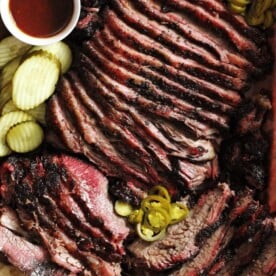
Texas Style Smoked Beef Brisket
Video
Equipment
- 1 Smoker I highly recommend this pellet grill!
Ingredients
- 1 12-14 pound whole packer brisket
- 2 Tablespoons coarse Kosher salt
- 2 Tablespoons coarse ground black pepper
- 2 Tablespoons garlic powder (optional)
Instructions
- Store your brisket in the refrigerator until you are ready to start trimming. Cold briskets are much easier to work with. Flip your brisket over so the point end is underneath. Remove any silver skin or excess fat from the flat muscle. Trim down the large crescent moon shaped fat section until it is a smooth transition between the point and the flat. Trim and excessive or loose meat and fat from the point. Square the edges and ends of the flat. Flip the brisket over and trim the top fat cap to about 1/4 of an inch thickness across the surface of the brisket.
- In a mixing bowl or empty spice container, mix the salt, pepper, and garlic. Share over the brisket to evenly distribute the spices on all sides.
- Preheat your smoker to 225 degrees F using indirect heat and hardwood smoke. Place the brisket on the smoker with the point end facing your main heat source. This is a thicker part of the brisket and it can handle the additional heat. Close the lid and smoke until and internal thermometer reads 165 degrees F (usually takes around 8 hours).
- On a large work surface, roll out a big piece of butcher paper (or foil) and center your brisket in the middle. Wrap the brisket by folding edge over edge, creating a leak proof seal all the way around. Return the wrapped brisket to the smoker, seam side down so the weight from the brisket crimps the edges of the paper wrap down tight.
- Close the lid on the smoker and, maintaining 225 degrees F, continue cooking until the internal temperature of the brisket reaches 202 degrees F in the thickest part of the meat (takes anywhere from 5-8 hours).
- Remove the brisket to a large cutting board and allow to rest for 1 hour before slicing. Slice both the point and the flat against the grain with a sharp knife and serve immediately.
Nutrition
Nutrition information is automatically calculated, so should only be used as an approximation.
**This recipe was originally published June 2017. It has since been updated and republished January 2019.
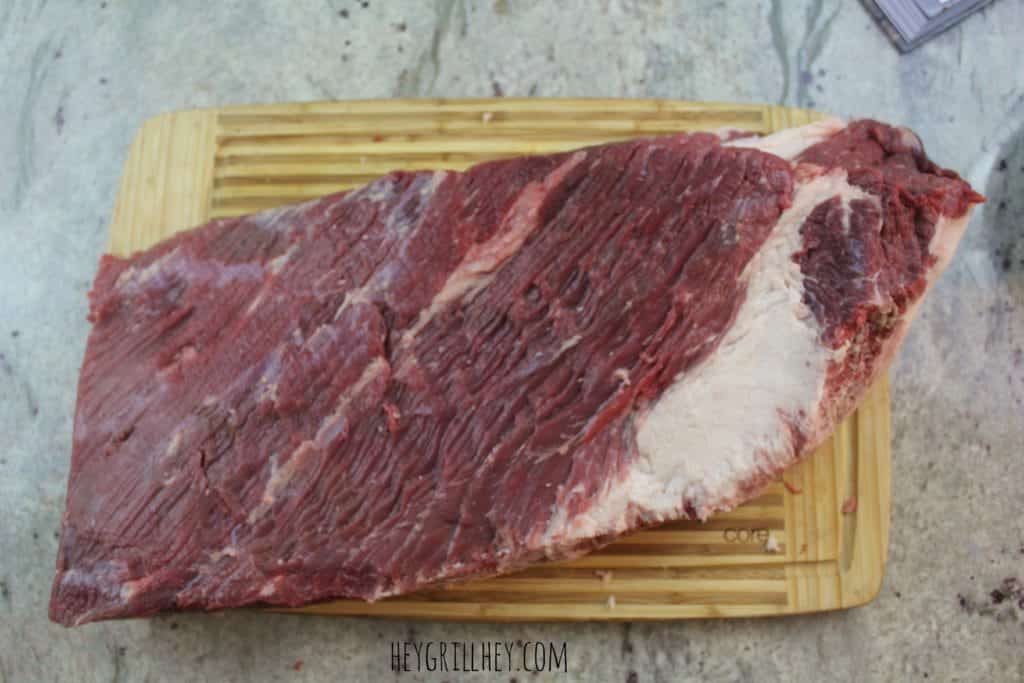
 The brisket gets wrapped up like a present, folding edge over edge until it is fully sealed. Return the brisket to your smoker with the folded edges down and continue smoking at 225 degrees F until the internal temperature of your brisket reaches 202 degrees F at the thickest part (make sure your thermometer is in the meat, not fat).
The brisket gets wrapped up like a present, folding edge over edge until it is fully sealed. Return the brisket to your smoker with the folded edges down and continue smoking at 225 degrees F until the internal temperature of your brisket reaches 202 degrees F at the thickest part (make sure your thermometer is in the meat, not fat).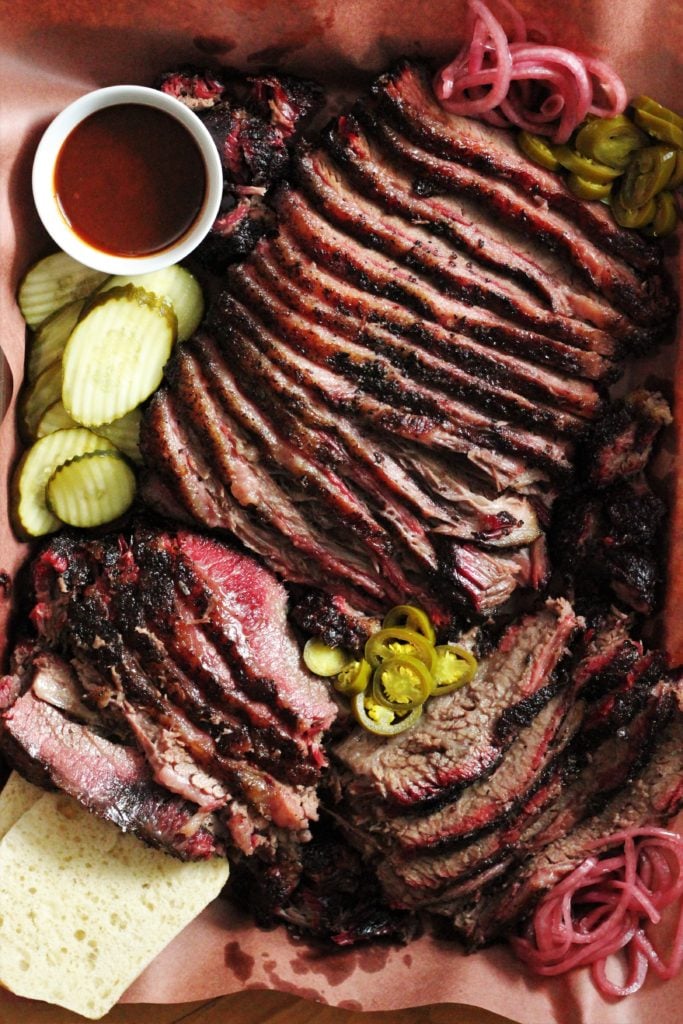
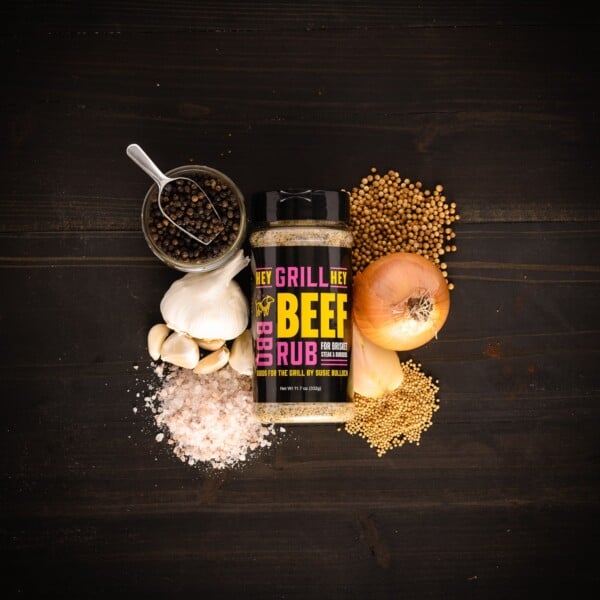


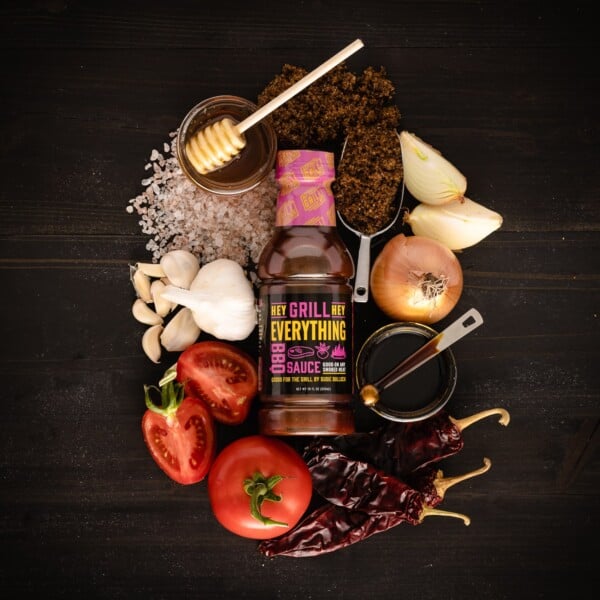
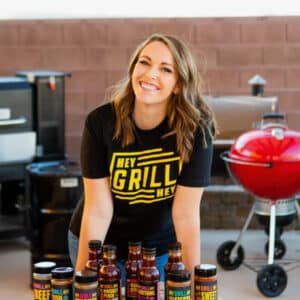
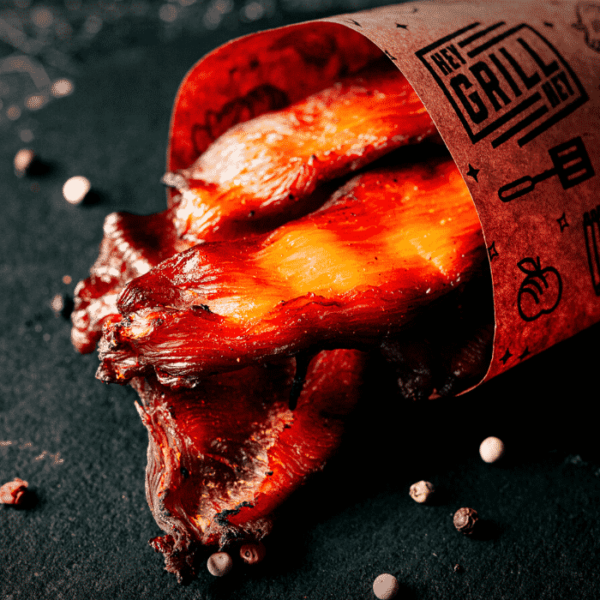
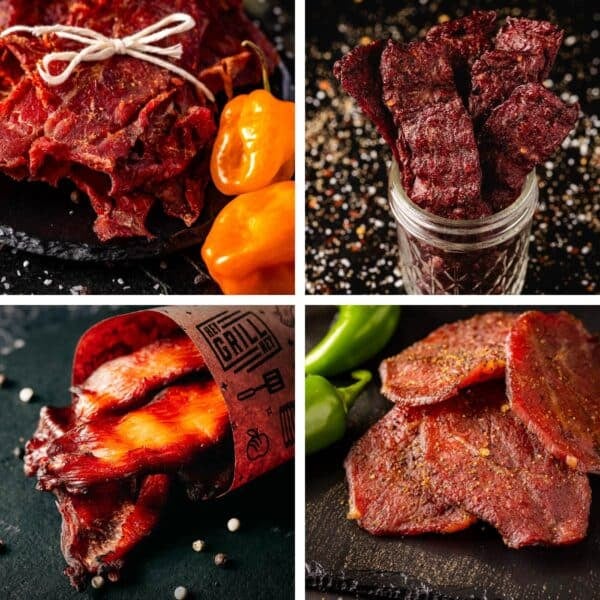

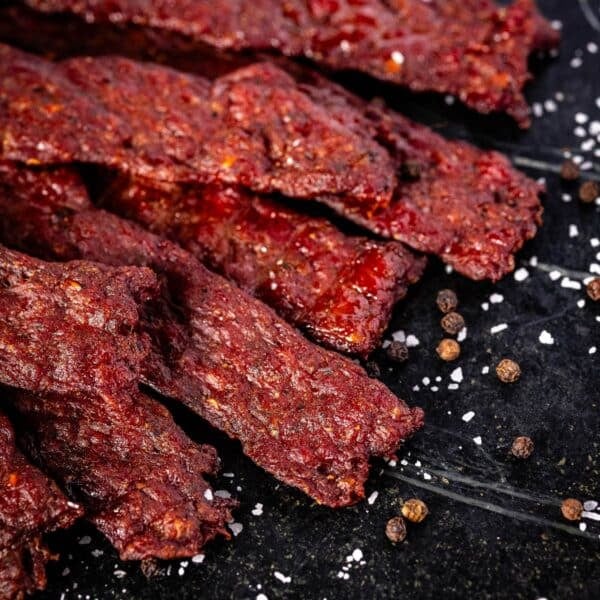





My wife surprised me with just the flat, what if any, changes would I need to be make in order to smoke this? Will I cook as if it was a whole packer? Would I inject? Will I still see a stall with this? And what possible time frame might I be looking at? New to this and any help I would appreciate,
Thank you
Cook it the exact same way. You’ll still see a stall, and depending on the weight it may cook faster. Just remember temperature is king when it comes to BBQ.
I will be using a pellet grill as well, you said that you mixed in some cherry, what would you feel would be a good ratio? My family really loved the “best sweet rub” for pork chops, I was wondering if you published the Beef seasoning recipe as well, or is that only able to be purchased? Thank you, love your videos and recipes.
1:1 would be a pretty good ratio. I haven’t published the beef recipe yet!
Good morning! I found your recipe from a google search earlier this week. Great video, btw. I am new to the smoking scene, but have had great success with ribs, pork loins, ham and turkey thus far. I am using a Pit Boss smoker. I purchased a 11 lb brisket, trimmed it up nice with my neighbor. At this point, I have put the meat on the smoker at midnight and had a sleepless night monitoring temps (I am paranoid about my final product being perfect). It is now 8 AM, and I have great bark on the bottom of the meat. However, the top fatty side is still a subpar bark. It reminds me very much of the texture and coloring of ribs. I’m close to the 165 temp at the thickest part of the meat. Do I leave it on the smoker a bit longer to attempt to get the dark bark color, or will it still create a bark after I wrap it? I’m stuck between a rock and a hard place. Can you help???
I would let the brisket ride in the smoker until your bark is a little more developed. 165 is just a guideline, I have held off and wrapped at 185 just to get the bark a little darker. The bark will continue to darken in the paper wrap, so no need to take it all the way to super dark bark during the first step. You want it set to the point where it doesn’t come off when you scratch it with your finger. Also, with your type of smoker, try and get the brisket fat side down after the wrap for the rest of the cook.
Two questions:
1) Can you dry out a brisket if you apply the rub the night before you smoke it? In my case about 10 hours before it went on the smoker?
2) How do you feel about spritzing the brisket during the cook?
Applying the rub the night before won’t dry it out at all! Spritzing is personal preference, so spritz away! It wouldn’t hurt to do if you’ve got the time!
Still dying of curiosity about whether unbleached parchment paper for baking can be substituted for butcher paper at the stall. If you’re not sure, that’s cool, just say so! Thanks! :^)
Hi Randy. I read much earlier in the thread that Susie said using parchment paper would work fine, as long as it was unwaxed. I’m sure she’s not missing your post on purpose!
Meat looks awful dry after cooking and slicing it. Why would you smoke to 225°F, when well-done beef temperature is only 165°F? Why not smoke to 125°F, wrap in paper, then smoke to 165°F?
I think you may have misunderstood the instructions. You want to pull the brisket off of the smoker around 202. The reason it needs to cook to a higher temp than well done beef is because in this cut of meat it takes temperature that high to make sure you’ve rendered all of the tough fatty tissue inside. The higher temp is what makes it nice and almost fall apart juicy.
Sue the internal temp when finished needs to be 201 degrees for optimal tenderness. The Smoker temperature needs to be a consistent 225 degrees in order to cook it well. Consistency is key when smoking. If your temperature is all over it will ruin the meat and your results will not be good. Did you wrap it the last leg of it?
So, I need some advice here. I followed the directions to a T. I got the meat from my butcher, who their cuts are always unbelievable. I seasoned it with salt, pepper, and some onion powder. Cooked it in my smoker and monitored the temps the whole cook. Wrapped in butcher paper when it hit 160ish. Let it cook until it got to 199. Let it rest for an hour. Had perfect bark, but when I cut into it, it was dry, except for the middle part near where the flat becomes the point. I’m not blaming your recipe, they’re all awesome! But what did I do wrong??? I’m always used to my bbq coming out great and impressing my guests. This one not so much.
How long was your total cook time? Also, did you monitor the temp of your pit during the cook?
Yes, I did monitor the cooker temp. I live in the northeast, so it’s cold. I raised the temp up a little over 225. Cook took around 17 hours for it to hit 199.
I’m from New York, and first visited Texas in 2015. After that trip, I was embarrassed that I had ever said that, “I make brisket”. This recipe has changed all that! And the SRF Waygu Gold is mind-blowing, if only once a year. I’m feeling an awful lot more comfortable in my Tony Lamas…
Hey, I have a small flat that I’m going smoke (around 3-3.5 pounds as it’s only for 2), do you think I would be best doing this at a lower temp to allow it to get more smokey flavour and not cook too quickly? Thanks!
Absolutely! Do it at 225-250.
Do you season your brisket the night before or just before smoking?
Thank you! Love your recipes!
I’ve done it both ways many times and honestly I don’t notice a difference!